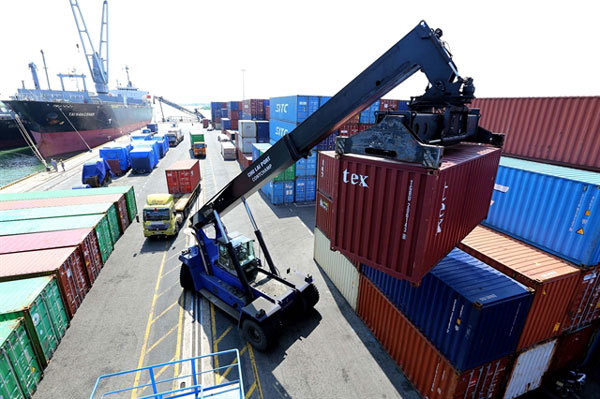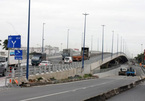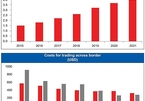 |
| A container is loaded at Chu Lai Port in Quang Nam Province. Vietnam lacks a well-connected logistics network which can boost agricultural product trade and export. — VNA/VNS Photo Danh Lam |
Vietnam has recently opened its doors for agricultural products to be exported to the international markets, yet struggled to win over customers and couldn’t compete with products from other countries in terms of quality and price due to drawbacks of the existing logistics system.
Most small- and medium-sized enterprises fail to afford the cost of logistics services.
According to Viet Nam Association of Logistics Services Enterprises, the expenses for storing and transporting agricultural products account for up to 30 per cent of selling prices, higher than those of Thailand and Singapore.
Meanwhile, low-cost logistics services lack quality control indicators, causing high losses due to damage and bacterial infection.
Hải quan (Customs) newspaper reported that the percentages of food loss and waste in the supply chain for HCM City’s market, for example, are 32 per cent for vegetables, 14 per cent for meat and 12 per cent for fish.
Tran Thanh Hai, deputy head of the Department of Import and Export under Ministry of Industry and Trade, blamed poor storage and delivery systems as the main causes to low business indexes of agricultural products in Mekong Delta.
Despite being Vietnam’s largest rice bowl and agricultural region, the area does not have a completed supply chain while scattered ports have limited capacity, increasing logistics expenses from US$7 to $10 for each tonne of agricultural products.
Up to 90 per cent of rice grown in Mekong Delta is sold directly to traders, then re-distributed for rice processing companies and exporters. The process is similar to other types of fruit and vegetable due to the lack of collection centres which can sort, pack and preserve agricultural products following food safety standards.
As agricultural products come through many stages before finally approach markets, prices are pushed higher while farmers do not benefit from the process.
Although provincial authorities in Vietnam have recognised these problems and plan on building their own logistics centres, a network linking these centres which involves land reserve, infrastructure and facilities have not been developed.
In the Mekong Delta, goods are transported via waterways while in other parts of the country, road transportation is the most common.
Poor logistics systems also hinder border trade.
According to Viet Nam Border Traders Association, the total value of goods exchanged through border gates, including rice, peppercorn, rubber and coffee, reaches US$30 billion per year, increasing by more than 20 per cent per year.
However, MARD said storage systems, especially cold storages, at border gates were unable to satisfy the rising demand of agricultural exports while cargoes are still mostly manually loaded, slowing down cross-border clearance activities.
Tran Cong Thang, deputy head of the Institute of Policy and Strategy for Agriculture and Rural Development, said degraded markets at border gates and insecure payment services restrained border trade between Vietnam and neighbouring countries. — VNS

HCM City assesses new logistics development plan
Nguyen Ngoc Hoa, deputy director of the HCM City Department of Industry and Trade, talks with Sài Gòn Giải Phóng (Liberated Sài Gòn) newspaper about HCM City’s development plan for the logistics industry to 2025 with a vision to 2030,

New approach into Vietnam logistics
Logistics is a crucial component for the Vietnamese e-commerce market to succeed and reach its full potential.
 Despite being considered as the driving force of Vietnam’s economic growth, agriculture has been held back by an incomplete logistics system which fails to ensure quality and connect farms with markets.
Despite being considered as the driving force of Vietnam’s economic growth, agriculture has been held back by an incomplete logistics system which fails to ensure quality and connect farms with markets.